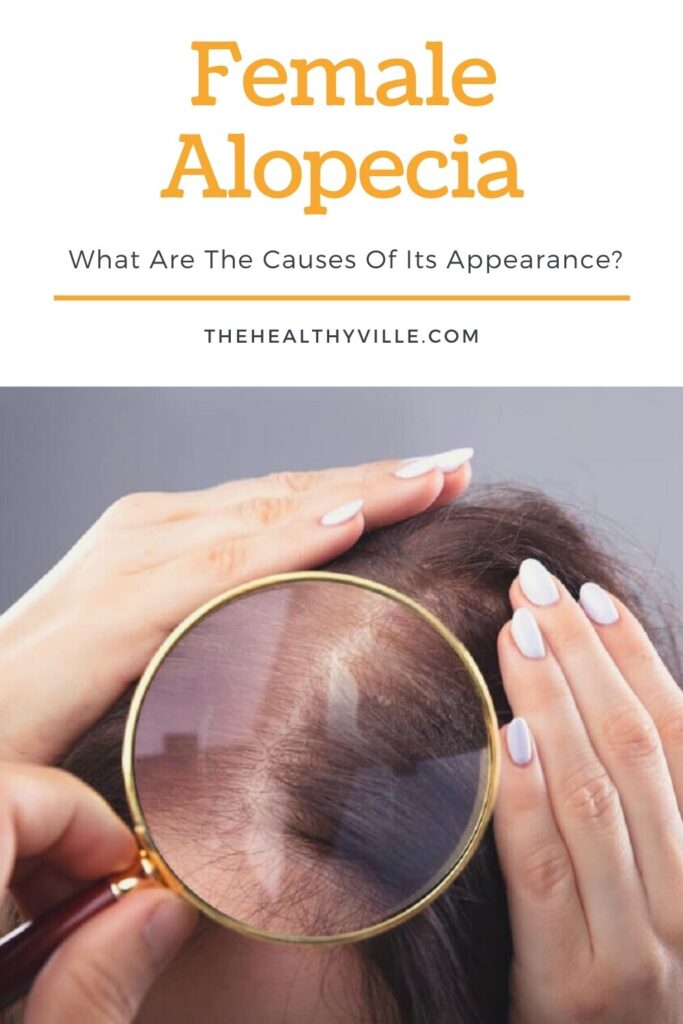Female alopecia refers to the pathological loss of hair on any part of the body. In other words, it not only affects the hair on the head, but can damage the eyebrows, eyelashes or other areas.
In women, it is rare for this form of baldness to progress to complete hair loss as it does in men. Still, it can generate a strong emotional impact, since women consider it unsightly. Why does this condition occur?
Main causes of female alopecia
Female alopecia can have different causes and characteristics. Generally, as in men, it is classified as scar or non-scar alopecia. In the first type, what happens is that a destruction of the hair follicle occurs, so the hair loss is irreversible.
The main causes of scarring alopecia are skin diseases such as discoid lupus or lichen planus. On the other hand, non-scarring alopecia are those in which the hair can grow back. We are going to talk about the most common types within this category.
Androgenetic alopecia
This type of alopecia is also known as pattern alopecia. It is the most frequent cause of this situation in women. So much so that it affects almost 50% of women at some point in their lives.
Its appearance due to age, that is, the incidence increases as aging occurs. In particular, estimations are that it affects 30% of women in their 70s; however, it can occur at other stages.
Baldness is evident in the central area of the head; It is important to note that the forehead line is there, so the famous “entrances” that usually characterize men do not appear.
The truth is that the factors that influence its development are not exactly familiar. It is believed that there is a significant hormonal and metabolic influence. Furthermore, a study carried out at a University in Brazil shows that the genetic influence is remarkable.
Now, although the condition is called androgenetic alopecia, most women who suffer from it have normal levels of androgens in their blood. Therefore, this data is not relevant in your study.
Alopecia areata
Alopecia areata is a less common pathology that seems to have an immune cause. In this case, what happens is that hair loss occurs in the form of rounded patches. There can be a single focus or several, and even affect more than 50% of all hair.
Although it falls into the category of reversible alopecia, it is a recurring situation. In some people it can cause loss of all hair. In addition, its appearance is in relation to stressful situations or a weak immune system.
What other factors influence this condition?
Numerous factors can influence hair loss, so the causes of this situation are almost innumerable. We can find alopecia as a consequence of childbirth, due to extreme weight loss, bleeding or even surgical procedures.
Hormonal alterations, such as thyroid pathology, can also be the cause. Similarly, certain infections, carcinogenic processes and medical treatments can cause alopecia.
It is also important to note that there is a psychiatric disorder, trichotillomania, which consists of compulsively pulling hair. You should differentiate this situation from the rest, since the approach when seeking treatment will be different.
Can you treat it?
As in men, you can treat female alopecia, but it depends on the cause. We must bear in mind that this situation has a very strong impact at the level of self-esteem and self-evaluation. Therefore, it is essential to individualize each case and do everything possible to solve it.
For androgenetic alopecia, women usually use a medicine minoxidil, which stimulates hair growth. If a woman is pregnant or lactating, she should not use it.
In the case of alopecia areata, you can also use this medicine, in addition to corticosteroid treatments. However, none of these drugs is without side effects, so they should always be prescribed by a doctor.
Don’t forget to SHARE the info on female alopecia with your friends and family on your social networks!

